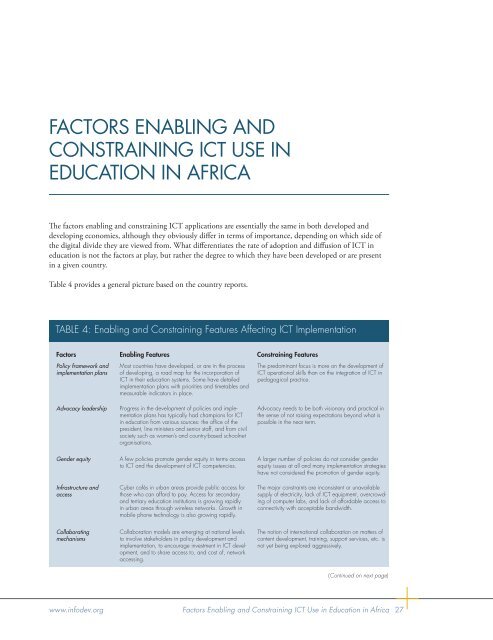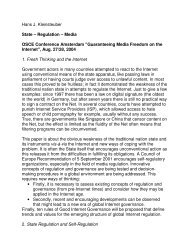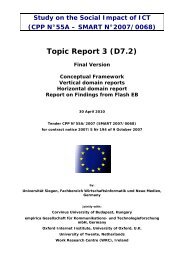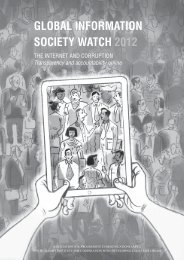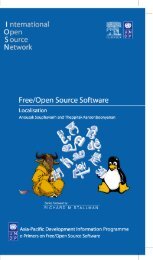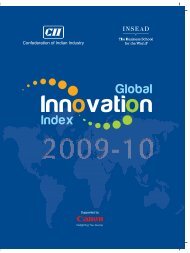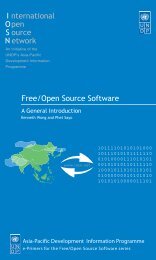SURVEY OF ICT AND EDUCATION IN AFRICA - infoDev
SURVEY OF ICT AND EDUCATION IN AFRICA - infoDev
SURVEY OF ICT AND EDUCATION IN AFRICA - infoDev
- No tags were found...
Create successful ePaper yourself
Turn your PDF publications into a flip-book with our unique Google optimized e-Paper software.
Factors Enabling andCONSTRA<strong>IN</strong><strong>IN</strong>G <strong>ICT</strong> Use in<strong>EDUCATION</strong> in AfricaThe factors enabling and constraining <strong>ICT</strong> applications are essentially the same in both developed anddeveloping economies, although they obviously differ in terms of importance, depending on which side ofthe digital divide they are viewed from. What differentiates the rate of adoption and diffusion of <strong>ICT</strong> ineducation is not the factors at play, but rather the degree to which they have been developed or are presentin a given country.Table 4 provides a general picture based on the country reports.Table 4: Enabling and Constraining Features Affecting <strong>ICT</strong> ImplementationFactors Enabling Features Constraining FeaturesPolicy framework andimplementation plansMost countries have developed, or are in the processof developing, a road map for the incorporation of<strong>ICT</strong> in their education systems. Some have detailedimplementation plans with priorities and timetables andmeasurable indicators in place.The predominant focus is more on the development of<strong>ICT</strong> operational skills than on the integration of <strong>ICT</strong> inpedagogical practice.Advocacy leadershipProgress in the development of policies and implementationplans has typically had champions for <strong>ICT</strong>in education from various sources: the office of thepresident, line ministers and senior staff, and from civilsociety such as women’s and country-based schoolnetorganisations.Advocacy needs to be both visionary and practical inthe sense of not raising expectations beyond what ispossible in the near term.Gender equityInfrastructure andaccessA few policies promote gender equity in terms accessto <strong>ICT</strong> and the development of <strong>ICT</strong> competencies.Cyber cafés in urban areas provide public access forthose who can afford to pay. Access for secondaryand tertiary education institutions is growing rapidlyin urban areas through wireless networks. Growth inmobile phone technology is also growing rapidly.A larger number of policies do not consider genderequity issues at all and many implementation strategieshave not considered the promotion of gender equity.The major constraints are inconsistent or unavailablesupply of electricity, lack of <strong>ICT</strong> equipment, overcrowdingof computer labs, and lack of affordable access toconnectivity with acceptable bandwidth.CollaboratingmechanismsCollaboration models are emerging at national levelsto involve stakeholders in policy development andimplementation, to encourage investment in <strong>ICT</strong> development,and to share access to, and cost of, networkaccessing.The notion of international collaboration on matters ofcontent development, training, support services, etc. isnot yet being explored aggressively.(Continued on next page)www.infodev.org Factors Enabling and Constraining <strong>ICT</strong> Use in Education in Africa 27


